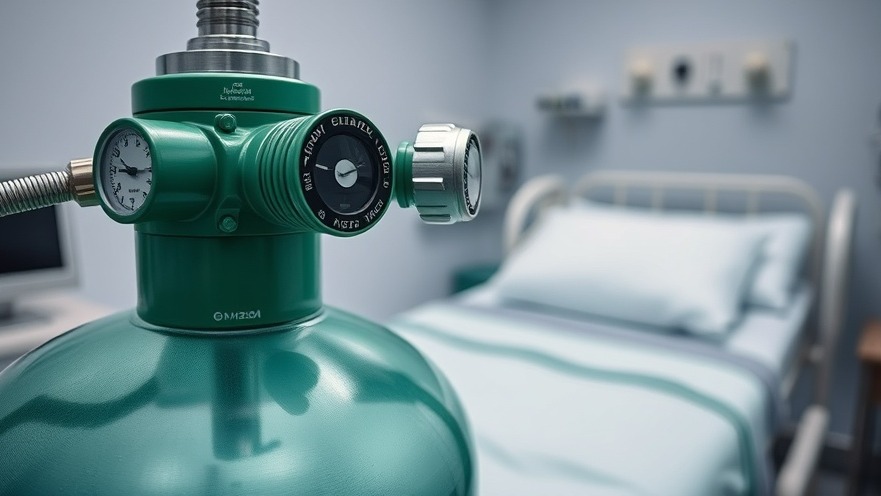
Bridging the Medical Oxygen Gap: A Global Challenge
The stark reality revealed by a recent report co-authored by the University of Auckland is that six out of ten people worldwide lack access to safe medical oxygen—a deficiency leading to hundreds of thousands of preventable deaths each year. The report highlights the inequities surrounding access to this vital resource, particularly affecting low and middle-income countries (LMICs).
Medical oxygen is not merely a hospital requisite; its necessity permeates every level of healthcare, aiding in treating severe conditions like pneumonia and ensuring safe surgeries. The Lancet Global Health Commission on Medical Oxygen Security stresses that the ongoing global health crisis exacerbates existing inequalities in healthcare access, particularly against the backdrop of the COVID-19 pandemic, which drew attention to critical shortages.
Understanding the Scope of Medical Oxygen Shortages
According to the Commission's findings, around 374 million people require medical oxygen annually, yet over five billion people remain deprived of adequate oxygen services. This gap represents a staggering 70% deficit in coverage in LMICs, where only 30% of individuals in need receive satisfactory oxygen therapy.
The impacts of these shortages are not uniform; rural areas, particularly in regions like sub-Saharan Africa, face the most acute deficiencies. With only 54% of general hospitals equipped with pulse oximeters—a crucial tool for assessing oxygen needs—the challenge is steep. Frequent equipment failures and a lack of operational resources amplify the crisis, often forcing healthcare practitioners to make agonizing decisions about patient care.
The Cost-Effectiveness of Addressing Oxygen Needs
While closing the oxygen gap comes with a daunting price tag of approximately $34 billion over five years, the return on investment in medical oxygen systems is compelling. Studies suggest that the benefits of improved oxygen access echo beyond immediate health impacts, potentially aiding in achieving eight of the United Nations’ nine Sustainable Development Goals for health.
Moreover, medical oxygen investment is on par with routine childhood immunization in terms of cost-effectiveness. The urgency of prioritizing oxygen access will only escalate as global trends indicate a rising need due to population growth and changing health patterns.
Innovating Oxygen Delivery Systems
The report emphasizes the necessity for tailored national medical oxygen plans, urging governments to develop frameworks that integrate public and private sector efforts while minimizing reliance on out-of-pocket expenses for patients. This approach aims to ensure that the provision of medical oxygen transcends being seen merely as a commodity.
Pulse oximeters and effective oxygen delivery systems should become a fundamental component of healthcare infrastructure at all levels, from primary healthcare facilities to tertiary hospitals. Strategically investing in education for healthcare practitioners about these tools and their clinical applications will enhance patient outcomes dramatically.
Collaborative Efforts to Establish Sustainable Solutions
The medical oxygen crisis requires concerted global action. Collaboration between manufacturers, governments, and healthcare providers is vital to maintain quality, affordability, and access to oxygen services. There remains a pressing need for entities like the Global Oxygen Alliance (GO2AL) to mobilize resources and assistance geared toward developing robust oxygen supply systems.
Furthermore, proper data management holds the key to more effective decision-making and resource allocation regarding medical oxygen distribution. The introduction of tools such as the Access to Medical Oxygen Scorecard will enable stakeholders to monitor progress and identify areas requiring urgent attention.
A Call for Immediate Action and Advocacy
For concierge health practitioners and medical professionals committed to enhancing patient outcomes, understanding the medical oxygen crisis and advocating for broader access is crucial. The health implications extend beyond individual hospitals and clinics, highlighting a systemic issue necessitating an overhaul of how medical oxygen is integrated within global healthcare frameworks.
As the report expresses, there should be no compromise: “oxygen delayed is life denied.” Addressing the inequities in medical oxygen access can contribute to preventing needless deaths and ensuring a healthier future for millions. Join the efforts to promote systemic changes that address this fundamental health crisis.
 Add Row
Add Row  Add
Add 






Write A Comment